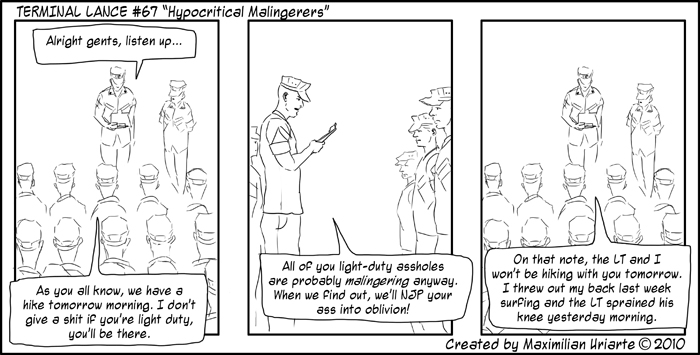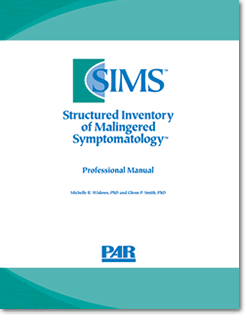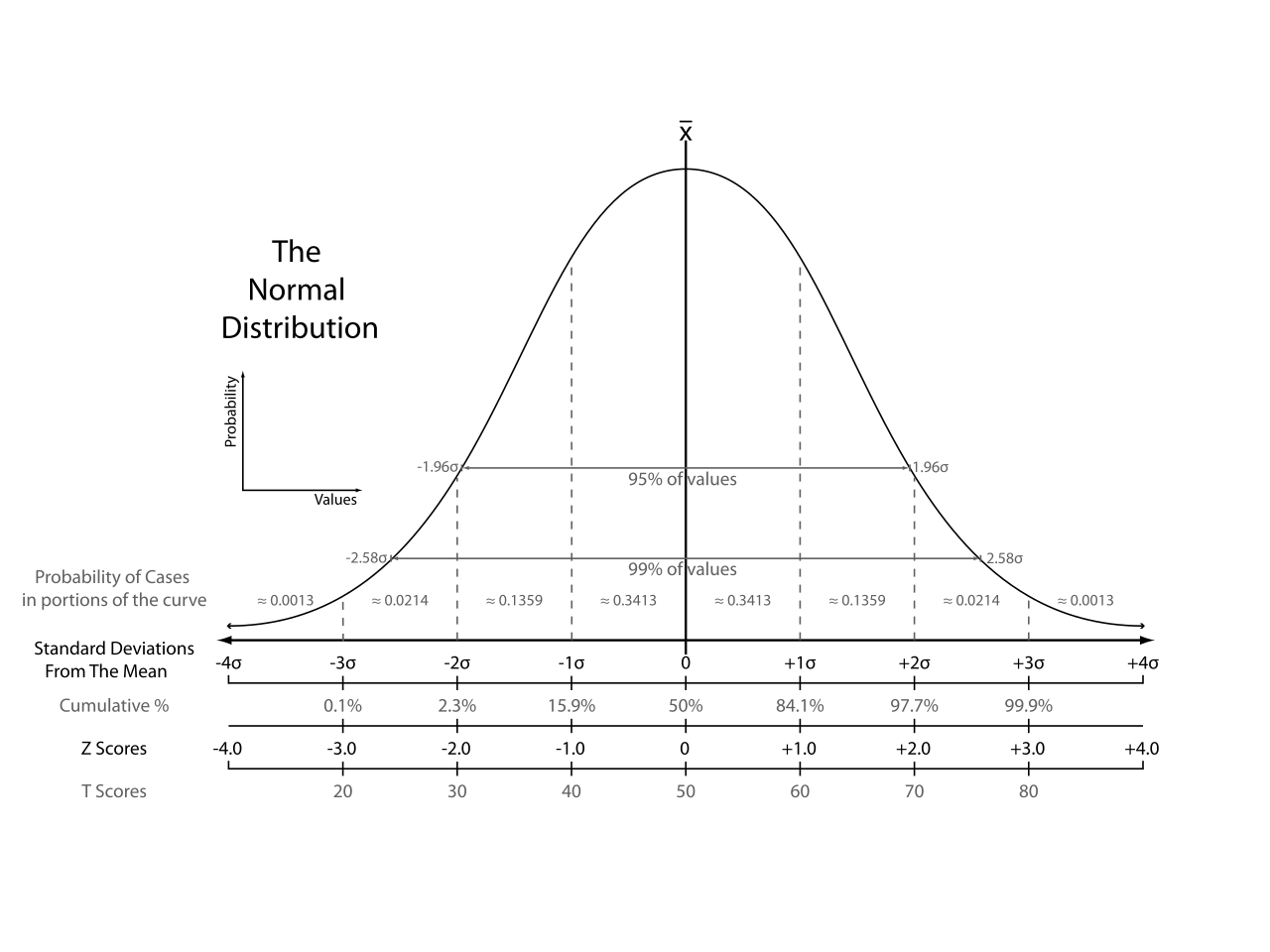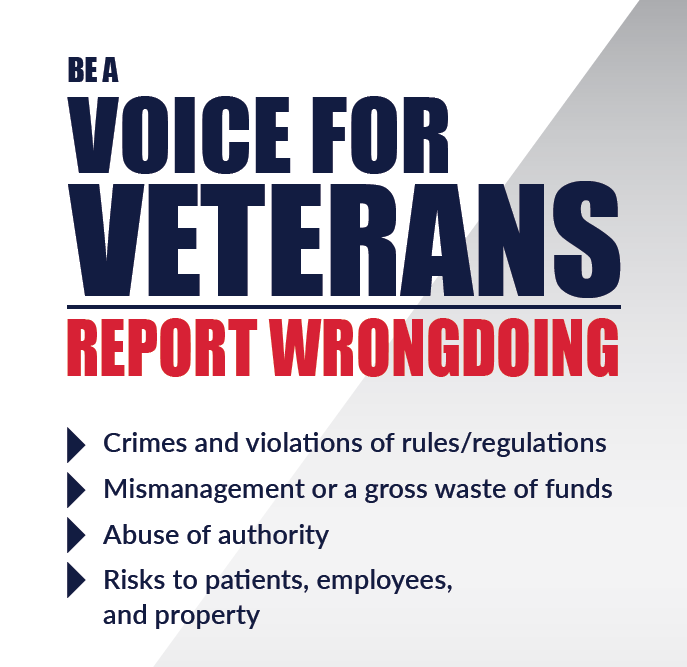SIMS: Structured Inventory of Malingered Symptomatology
July 9, 2024 – The SIMS, which stands for Structured Inventory of Malingered Symptomatology, is a psychological assessment instrument designed to screen for possible exaggeration or feigning of cognitive impairment and psychiatric disorders.
Particularly for U.S. Department of Veterans Affairs (VA) disability exams (compensation and pension examinations, also known as "C&P exams" or "VA claim exams"), what is the best cutoff score for the SIMS?
PTSDexams.net is an educational site with no advertising and no affiliate links. Dr. Worthen conducts Independent Psychological Exams (IPE) with veterans, but that information is on his professional practice website.
SIMS Cut Score: Key Points
► Never conclude that a veteran (or other evaluee) is malingering, feigning, exhibiting "poor effort", etc., based on a SIMS score alone.
► To screen for malingered cognitive and psychiatric symptoms, the best cut score is at least >19, i.e., a score of 20 or above, or a slightly more conservative >23. Then follow-up with a more comprehensive assessment of possible feigning (or significant exaggeration) of psychiatric symptoms or "suboptimal effort" (or both).
► If you use the SIMS as part of an assessment battery, I recommend a conservative cut score of >44, as a nearly definitive feigning indicator.
→ Scores of 24–44 are a strong feigning indicator, when used as part of an assessment battery.
→ This is my opinion based on my understanding of the research literature for using the SIMS during U.S. veteran disability evaluations (C&P exams).
Other reputable psychologists disagree and believe that one should consider scores above 23 as positive for feigning.
I encourage you to read the research literature and consider other factors as described below and then form your own opinion.
► Also consider this general guideline from Shura, Ord, & Worthen (2022)*:
SIMS cutoff scores should be determined a priori [beforehand] after taking into account:
→ The estimated feigning base rate [prevalence] for the setting in which you are evaluating the person.
→ The extent to which—in the relevant evaluative setting—examinees with genuine psychopathology are likely to produce elevated SIMS scores, i.e., if the estimated false positive rate would be high using standard cut scores.
→ For example, for an inpatient or residential PTSD treatment program, where many patients have severe PTSD and severe comorbid mental disorders, using a cut score of >23 would result in a high false positive rate.
► When using an assessment battery, keep in mind that highly correlated tests should not be counted as unique dissimulation indicators.
* Shura, R. D., Ord, A. S., & Worthen, M. D. (2022). Structured Inventory of Malingered Symptomatology: A Psychometric Review. Psychological Injury and Law, 15(1), 64–78. https://doi.org/10.1007/s12207-021-09432-y
As a "thank you" to the artist, please click here (opens a new tab or window) to learn more about Terminal Lance, and Mr. Uriarte's highly-rated, best-selling graphic novel, The White Donkey: Terminal Lance.
The SIMS is a Screening Test
Therefore, psychologists should never state that a veteran is feigning or malingering based on a SIMS score alone.
Along these lines, the test publisher, PAR Inc., emphasizes several important forensic assessment principles in the PAI interpretative report for the SIMS:
► The SIMS is not intended to serve as a diagnostic tool for feigning in isolation. Individuals identified as potential malingerers through the use of the SIMS should be referred for more extensive assessment.
► A determination of feigning should be made in the context of a comprehensive evaluation only, [based on] multiple sources of data such as:
- psychosocial, psychiatric, and medical history;
- clinical interview;
- comparison of subjective reports of symptoms to objective information and observations;
- results from feigning-specific and psychological inventories), as well as
- multiple assessment devices (e.g., structured interviews, performance based tests)
in order to provide convergent and corroborative data in making a definitive classification of feigning.
► Although the determination of feigning is dependent upon the discrimination between actual versus feigned or exaggerated symptoms, it does not preclude the presence of another disorder. As such, the suggestion of probable feigning using the SIMS should not negate the possibility of genuine disability or disorder. [lightly edited to enhance online reading]
The Recommended Cut Score in the Structured Inventory of Malingered Symptomatology (SIMS) Manual
The SIMS Manual recommends a cut off score of 14 to indicate the possibility of significant exaggeration and feigning.
However, subsequent research has demonstrated that this cut score produces high false positive rates, e.g., 36% in a study with personal injury litigants and disability claimants.1
Note: This does not mean you should disregard the Manual entirely. It is not unusual for subsequent research to modify cut scores, and most publishers update their test manuals periodically, so the recommended cutoff score in the manual might change in the future.
Screening vs. Test Battery
QUESTION: What cut score should C&P psychologists use during VA claim exams?2
ANSWER: It depends on why you administer the SIMS.
Θ If you give the SIMS to screen for possible exaggeration or feigning, then you want to use a cut score with fairly good sensitivity, and you can accept somewhat lower specificity.
Θ On the other hand, if you administer the SIMS as part of a "test battery",3 then you want higher specificity.
SIMS as a Screening Instrument
In a recent systematic review and meta-analysis,4 the authors recommend a cut score of >16 (≥17) for screening purposes.
Based on recent research not available to those authors at the time they wrote their article, I recommend a screening cut score of at least >19π and as high as >23.Γ
If you want to use the SIMS as a screening instrument, I suggest a cut score of at least >19, i.e., scores of 19 and above should trigger a more comprehensive assessment of possible malingered symptomatology.
SIMS as Part of a Test Battery
The authors of a systematic review article state that a >24 cut score is "only recommended when the SIMS is employed as part of a test battery for conclusive assessment in populations with particularly heightened SIMS scores due to genuine psychopathology (e.g., schizophrenia, intellectual disability)."5
While veterans presenting for a psychological C&P exam generally do not suffer from schizophrenia or low intellectual ability, many have endured horrific traumas and have been (or will be) diagnosed with PTSD. We know from previous research that genuine PTSD patients often elevate symptom validity scale scores well beyond other clinical groups.
I therefore recommend interpreting scores of 24 to 43 as indicating that feigning/exaggeration is quite likely, and scores >44 as nearly definitive, when using the SIMS as one component of an assessment battery.
I offer this recommendation for three reasons:
(1) Some genuine psychiatric patients in SIMS research studies had scores of 25 to 34. For example, in the systematic review article,6 the mean SIMS score for genuine (not exaggerating/feigning) patients across several different studies (n = 742) was 16.1 with a standard deviation of 8.8.
Assuming a normal distribution of scores, this indicates that about 16% of the genuine patients scored at or above 25 (mean + 1.0 sd = 24.9), and approximately 2% scored at or above 34 (mean + 2.0 sd = 33.7).
(2) We know from prior research, primarily with the MMPI-2, that genuine PTSD patients tend to overreport psychiatric symptoms to a significant degree.7,8,9 And a study of the SIMS with severely traumatized patients found that a cut score of >44 had sensitivity of .60 with specificity .98.9b
(3) In keeping with the equipoise principle in veterans law,10 C&P psychologists should err on the side of cut scores that might seem too conservative, as opposed to choosing a cut score on the edge.
(4) If you use the SIMS along with other symptom validity tests (SVTs), e.g., the Personality Assessment Inventory (PAI), you should take into account several factors in order to accurately gauge the Positive Predictive Power (PPP) of the test battery as a whole.11,12
These factors include the:
(a) correlations between and among all the symptom validity tests (to determine independence of the measures);
(b) sensitivity and specificity for each test;
(c) proportion of test results indicating malingered symptomatology from the total of all SVTs administered, e.g., 2/4, or 3/5, etc.;
(d) estimated base rate (prevalence) of significant exaggeration/feigning in the population being evaluated.
I encourage you to read the articles by Berthelson, et al. (2013)11 and Odland, et al. (2015)12 for a full discussion of these important considerations.
Important Considerations
Other important considerations include:
► the extent to which the psychologist-examiner has kept up with the scientific literature on evidence-based psychological assessment in general, and psychological disability evaluations with veterans in particular;
► the psychologist's willingness to hand-score test results when the standard scoring software does not do so.
- For example, the MMPI-2-RF Ds-rf scale has shown high specificity and positive predictive power (PPP),13 but the standard MMPI-2-RF software does not calculate Ds-rf.
► whether the C&P examiner selects which SVTs he or she will administer a priori (including using a priori decision-trees) or on the fly.
Endnotes
Γ. Wisdom, Nick M., Jennifer L. Callahan, and Terry G. Shaw. "Diagnostic Utility of the Structured Inventory of Malingered Symptomatology to Detect Malingering in a Forensic Sample." Archives of Clinical Neuropsychology 25, no. 2 (2010): 118-125. (In an archival, known-groups study of psychological injury claimants and plaintiffs, a SIMS cut score of >23 had sensitivity of 0.55 and specificity of 1.00.)
π. Clegg, C., Fremouw, W., & Mogge, N. (2009). Utility of the Structured Inventory of Malingered Symptomatology (SIMS) and the Assessment of Depression Inventory (ADI) in Screening for Malingering Among Outpatients Seeking to Claim Disability. The Journal of Forensic Psychiatry & Psychology, 20(2), 239-254. (In a combination simulation (community sample) and known-groups (Social Security disability claimants) design, a SIMS cutoff score of >19 had sensitivity .90 and specificity .69; a cut score of >20 had sensitivity of .85 and specificity of .71).
Footnotes
1. Wisdom, Nick M., Jennifer L. Callahan, and Terry G. Shaw. "Diagnostic Utility of the Structured Inventory of Malingered Symptomatology to Detect Malingering in a Forensic Sample." Archives of Clinical Neuropsychology 25, no. 2, (March 2010): 118–125. doi:10.1093/arclin/acp110
2. Veterans Benefits Administration. "VA claim exam (C&P exam)." https://www.va.gov/disability/va-claim-exam/
3. Test battery is a traditional psychological term referring to a group of psychological tests administered to assess different facets of an individual's cognitive functioning, personality, or behavior.
4. van Impelen, Alfons, Harald Merckelbach, Marko Jelicic, and Thomas Merten. "The Structured Inventory of Malingered Symptomatology (SIMS): A Systematic Review and Meta-analysis." Clinical Neuropsychologist 28, no. 8 (2014): 1336-1365. doi:10.1080/13854046.2014.984763
5. Id.
6. Id. at 1352.
7. Hyer, Lee, Patrick Boudewyns, William R. Harrison, William C. O'Leary, Ralph D. Bruno, Rayford T. Saucer, and John B. Blount. "Vietnam Veterans: Overreporting Versus Acceptable Reporting of Symptoms." Journal of Personality Assessment 52, no. 3 (1988): 475-486.
8. Frueh, B. Christopher, Mark B. Hamner, Shawn P. Cahill, Paul B. Gold, and Kasey L. Hamlin. "Apparent Symptom Overreporting in Combat Veterans Evaluated for PTSD." Clinical Psychology Review 20, no. 7 (2000): 853-885. doi:10.1016/S0272-7358(99)00015-X
9. Franklin, C. Laurel, Stephanie A. Repasky, Karin E. Thompson, Shannon A. Shelton, and Madeline Uddo. "Differentiating Overreporting and Extreme Distress: MMPI-2 Use with Compensation-Seeking Veterans with PTSD." Journal of Personality Assessment 79, no. 2 (2002): 274-285. doi:10.1207/S15327752JPA7902_10
9b. Rogers, Richard, Emily V. Robinson, and Nathan D. Gillard. "The SIMS Screen for Feigned Mental Disorders: the Development of Detection‐based Scales." Behavioral Sciences & the Law 32, no. 4 (2014): 455-466.
10. Gilbert v. Derwinski, 1 Vet. App. 49 (1990). (court opinion on Caselaw Access Project)
11. Berthelson, Lena, Siddika S. Mulchan, Anthony P. Odland, Lori J. Miller, and Wiley Mittenberg. "False Positive Diagnosis of Malingering Due to the Use of Multiple Effort Tests." Brain Injury 27, no. 7-8 (2013): 909-916. doi:10.3109/02699052.2013.793400
12. Odland, Anthony P., Andrew B. Lammy, Phillip K. Martin, Christopher L. Grote, and Wiley Mittenberg. "Advanced Administration and Interpretation of Multiple Validity Tests." Psychological Injury and Law 8, no. 1 (2015): 46-63. doi:10.1007/s12207-015-9216-4
13. Rogers, Richard, Nathan D. Gillard, David TR Berry, and Robert P. Granacher. "Effectiveness of the MMPI-2-RF Validity Scales for Feigned Mental Disorders and Cognitive Impairment: A Known-groups Study." Journal of Psychopathology and Behavioral Assessment 33, no. 3 (2011): 355-367. doi:10.1007/s10862-011-9222-0
Subscribe to receive new articles and other updates
What Do You Think?
I value your feedback!
If you would like to comment, ask questions, or offer suggestions about this page, please feel free to do so. Of course, keep it clean and courteous.
You can leave an anonymous comment if you wish—just type a pseudonym in the "Name" field.
If you want to receive an email when someone replies to your comment, click the Google Sign-in icon on the lower right of the comment box to use Google Sign-in. (Your email remains private.)
↓ Please comment below! ↓








